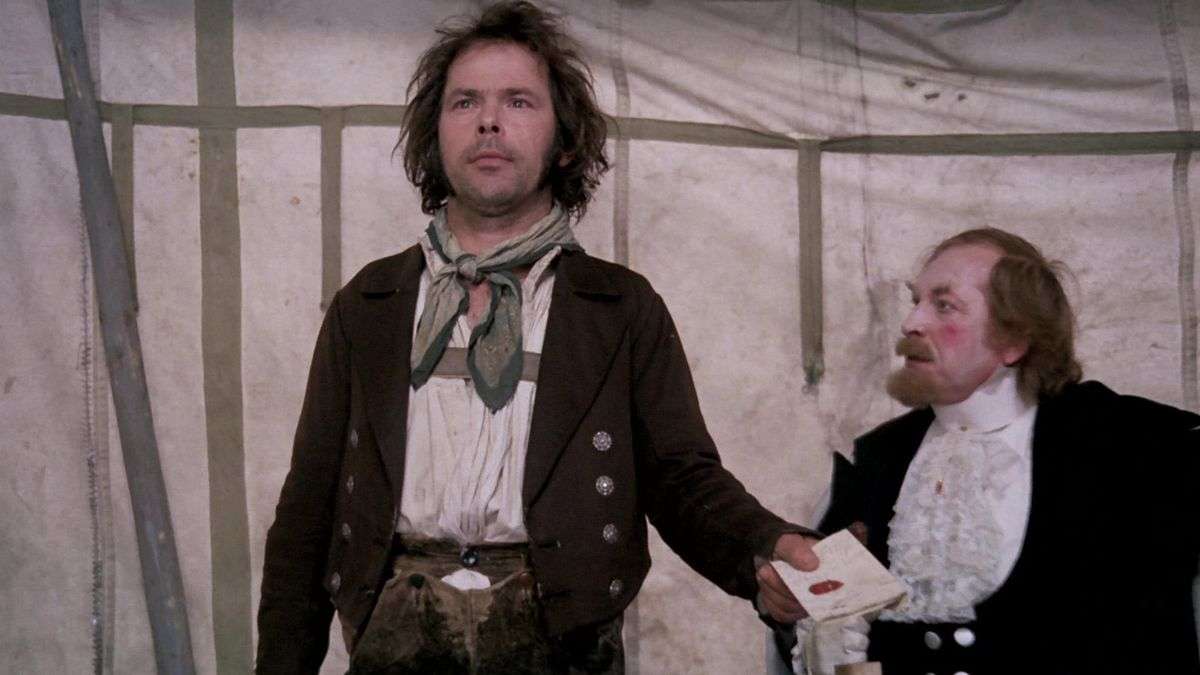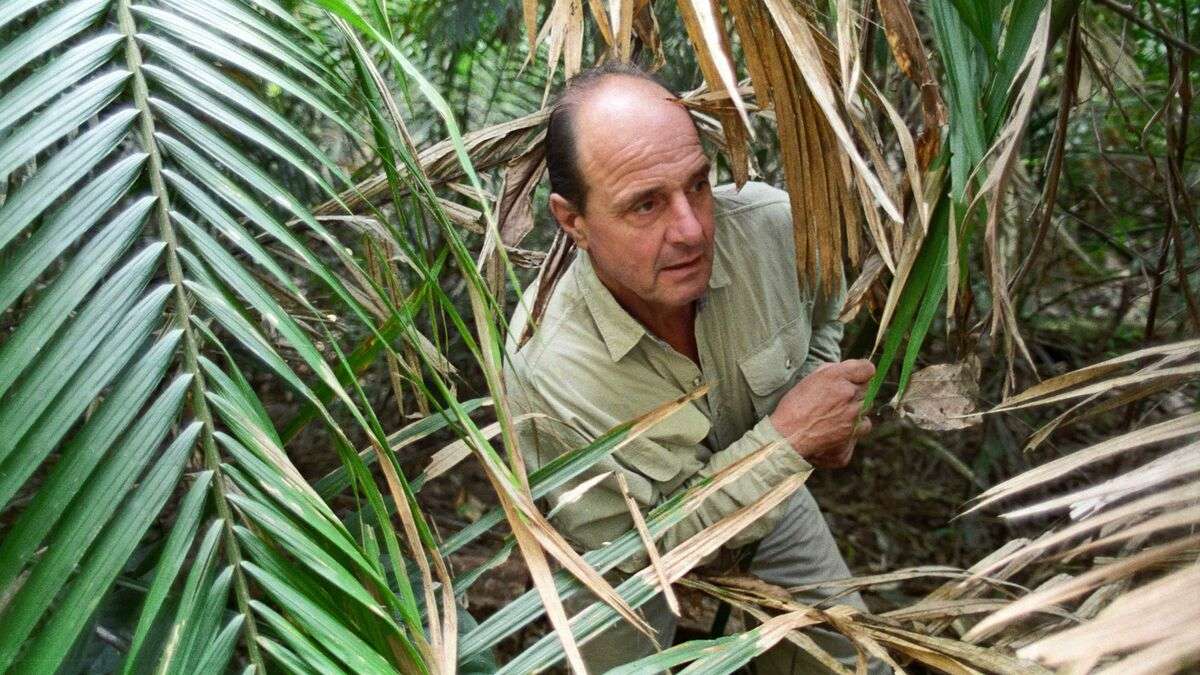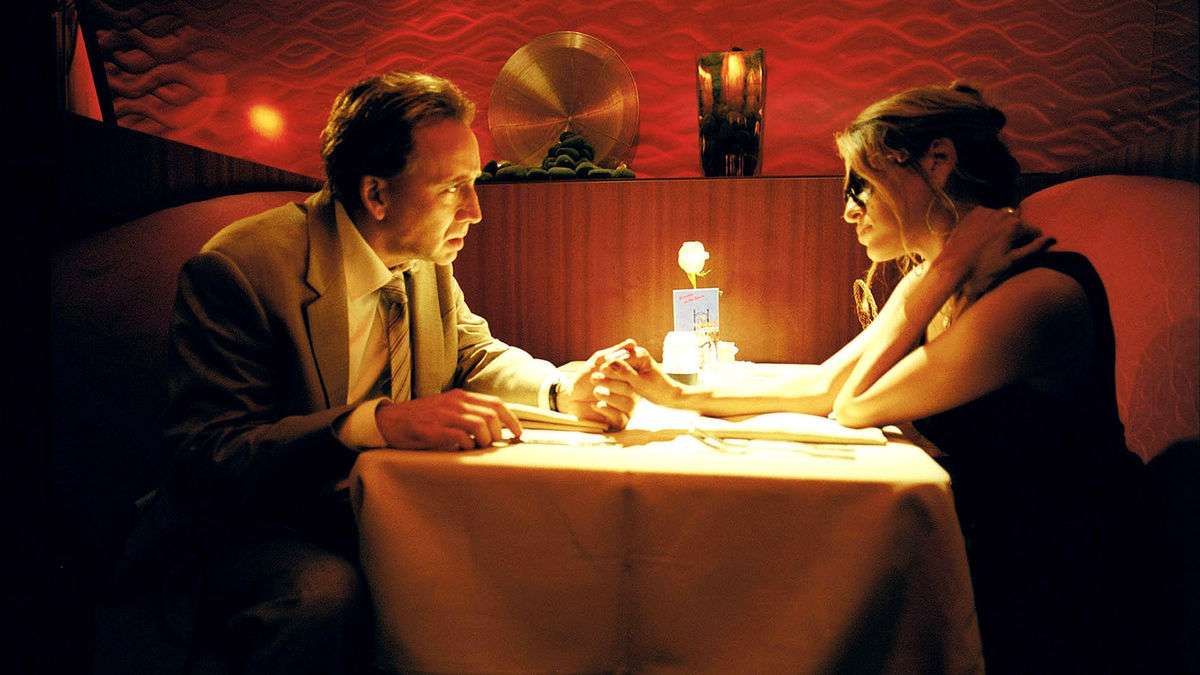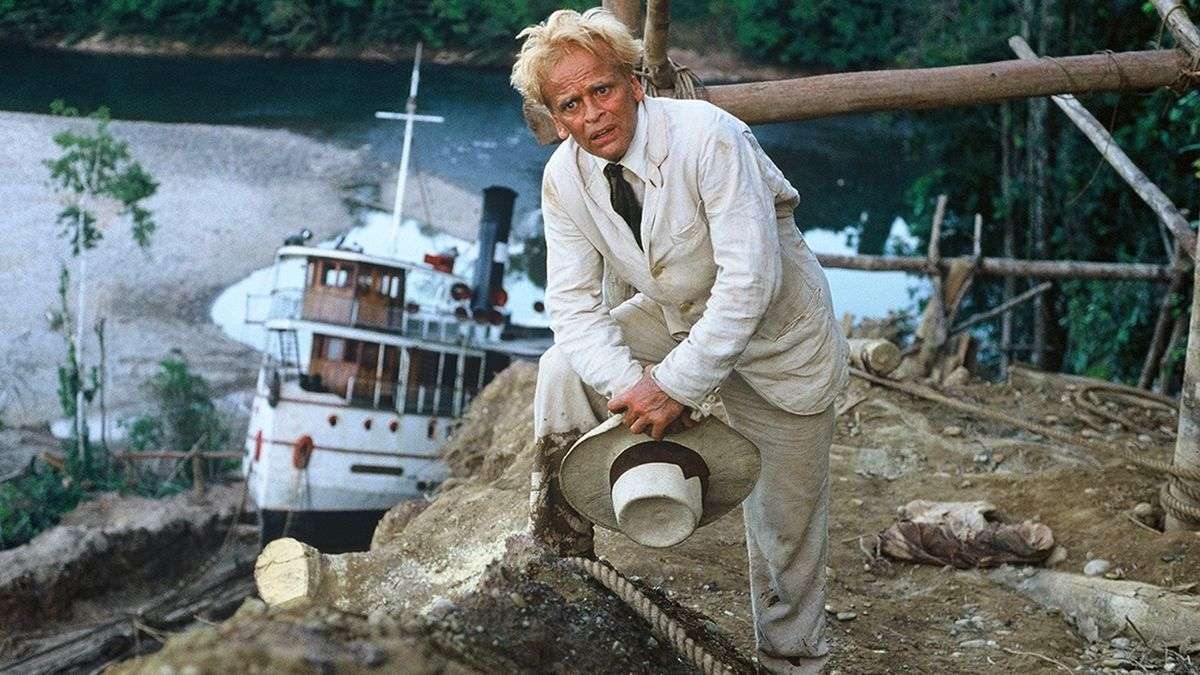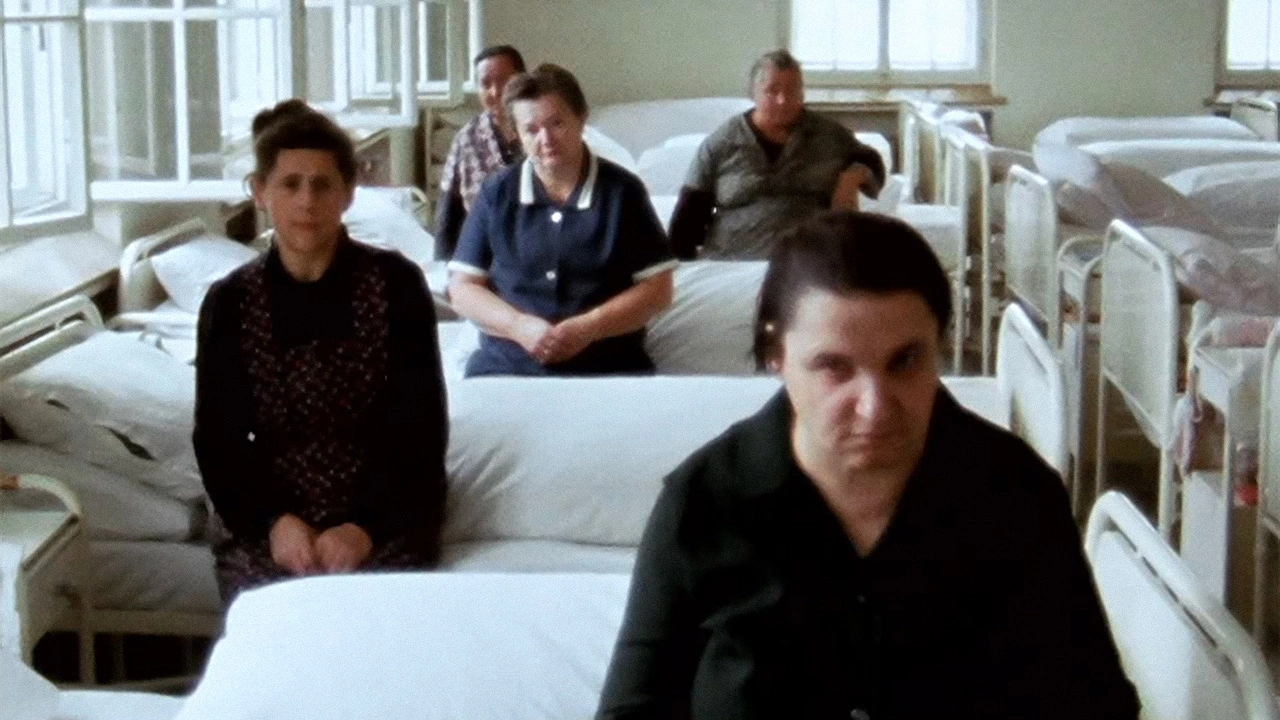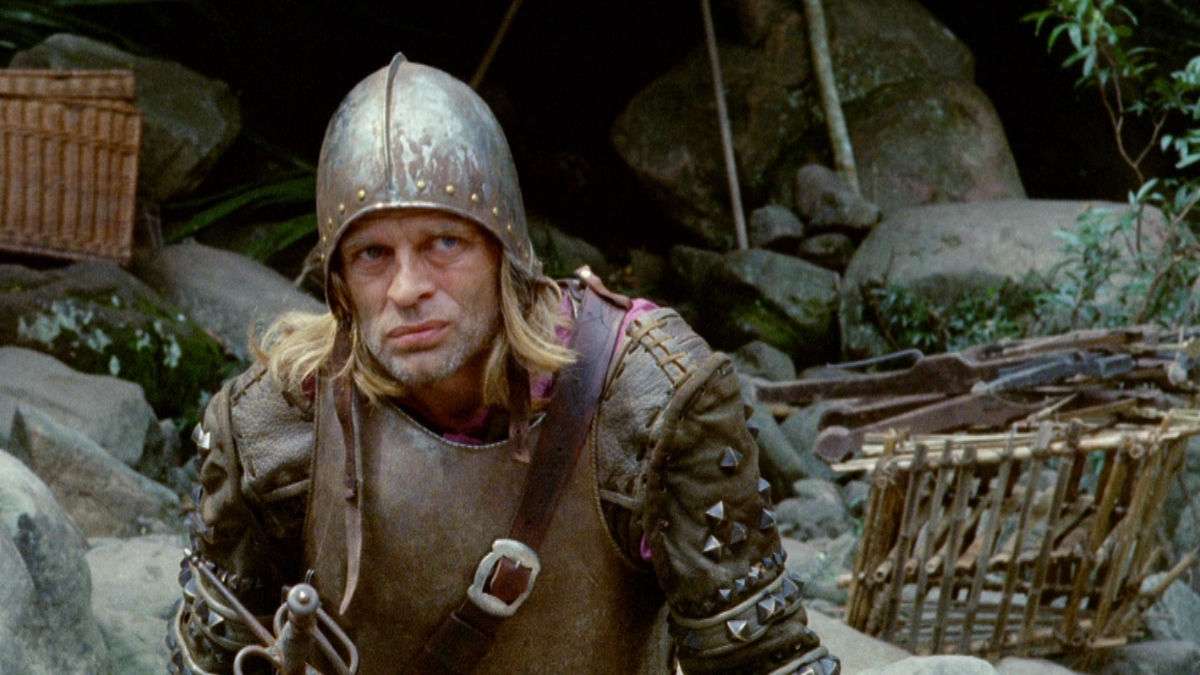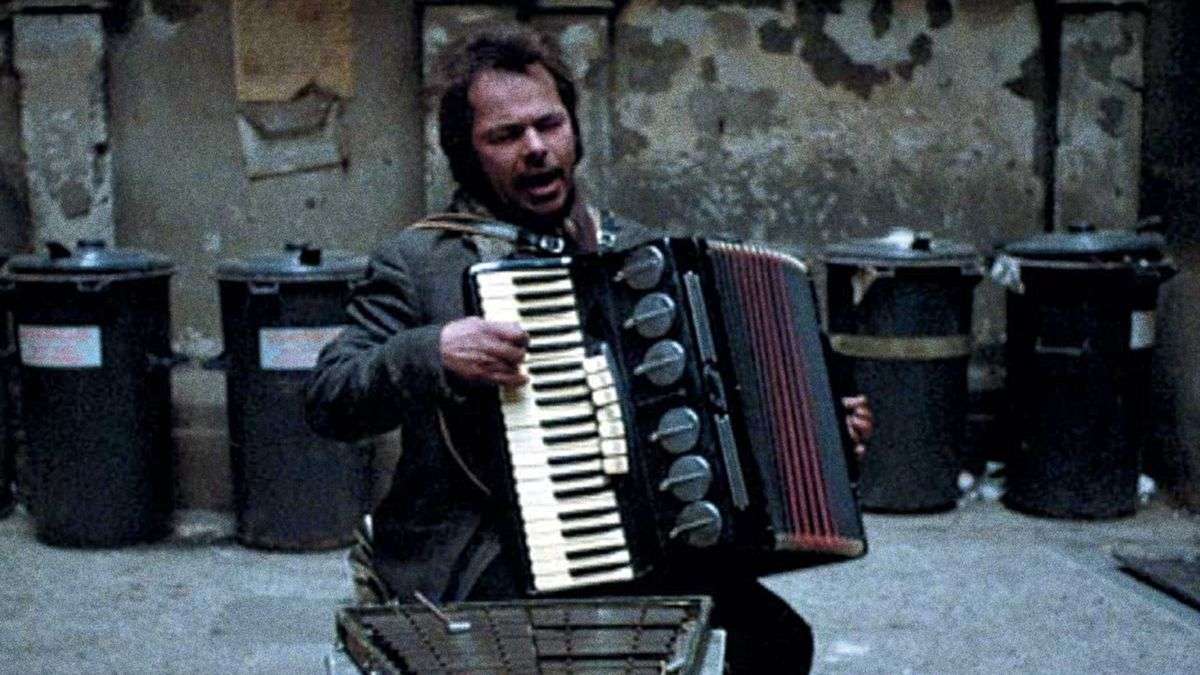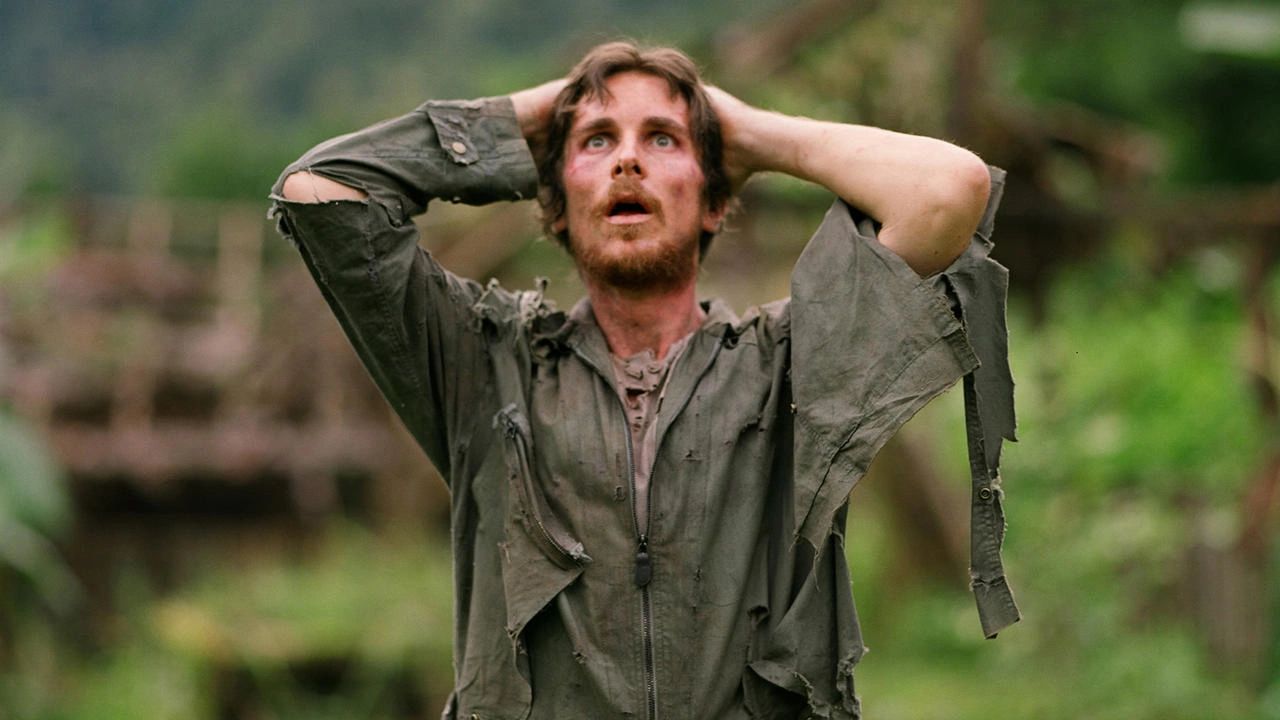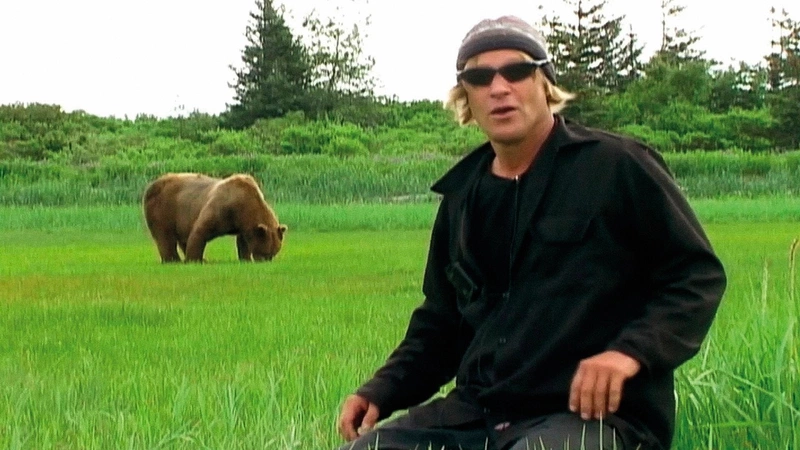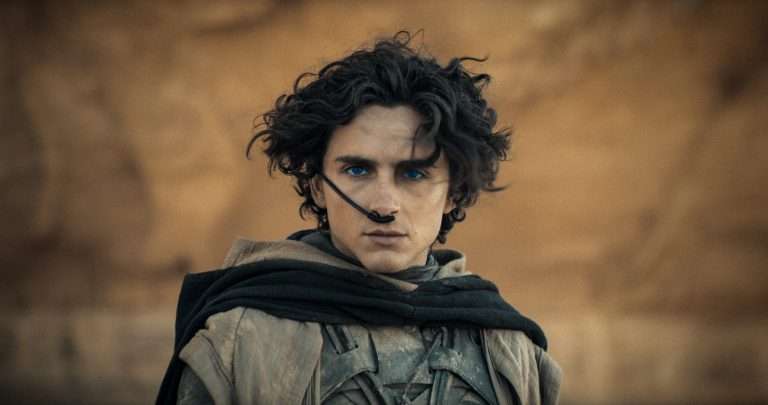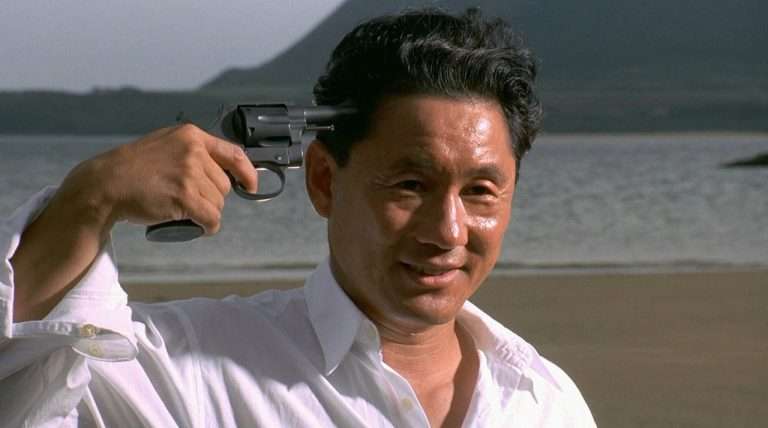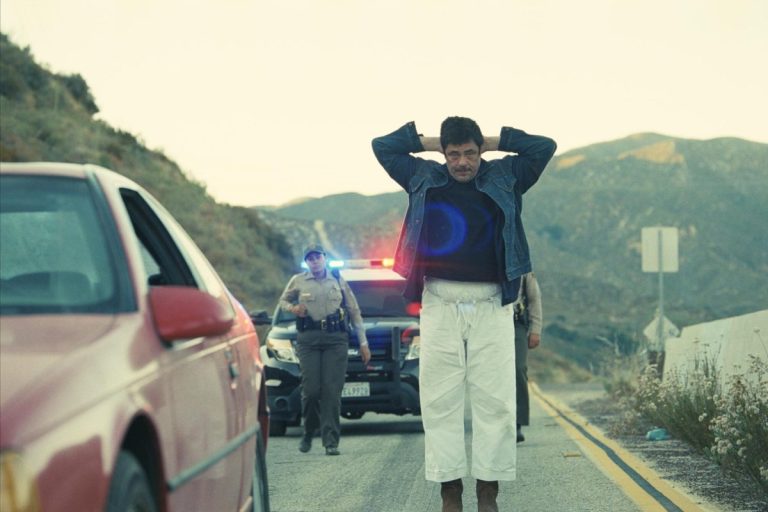A legitimate argument can be made for Werner Herzog being not only the most interesting filmmaker alive but the most interesting human being, period. A renegade poet who shuns academic structure in the arts, the varying subjects—be they people, locations, or confounding phenomena—that have preoccupied Herzog’s journey almost make the films that come from these excursions feel like side-quests in his greater mission to seek higher enlightenment. But make no mistake, Herzog is the sort of film director who views cinema as a primal drive, a war path for visionaries with no other means of channeling their confusion and awe at the world surrounding them. In its worst moments as well as its best, Herzog’s filmography exemplifies this hunger for sublime fulfillment.
A man whose curiosity has taken him from the Peruvian rainforests to the Antarctic glaciers, from the crests of erupting volcanoes to the most intricate circuit boards of our modern computers, Herzog’s fascinations often derive from the friction between the world that has shaped human life and the human life that has shaped the world. Even in their most intimate subjective examinations, Herzog’s films maintain a vigorous ambition towards unpacking precisely what makes us tick. As a result, an equal fascination with what makes Herzog himself tick becomes as inevitable as the madness of failed conquest. Scouring every corner of the globe, here are the ten best Werner Herzog films:
Special Mentions:
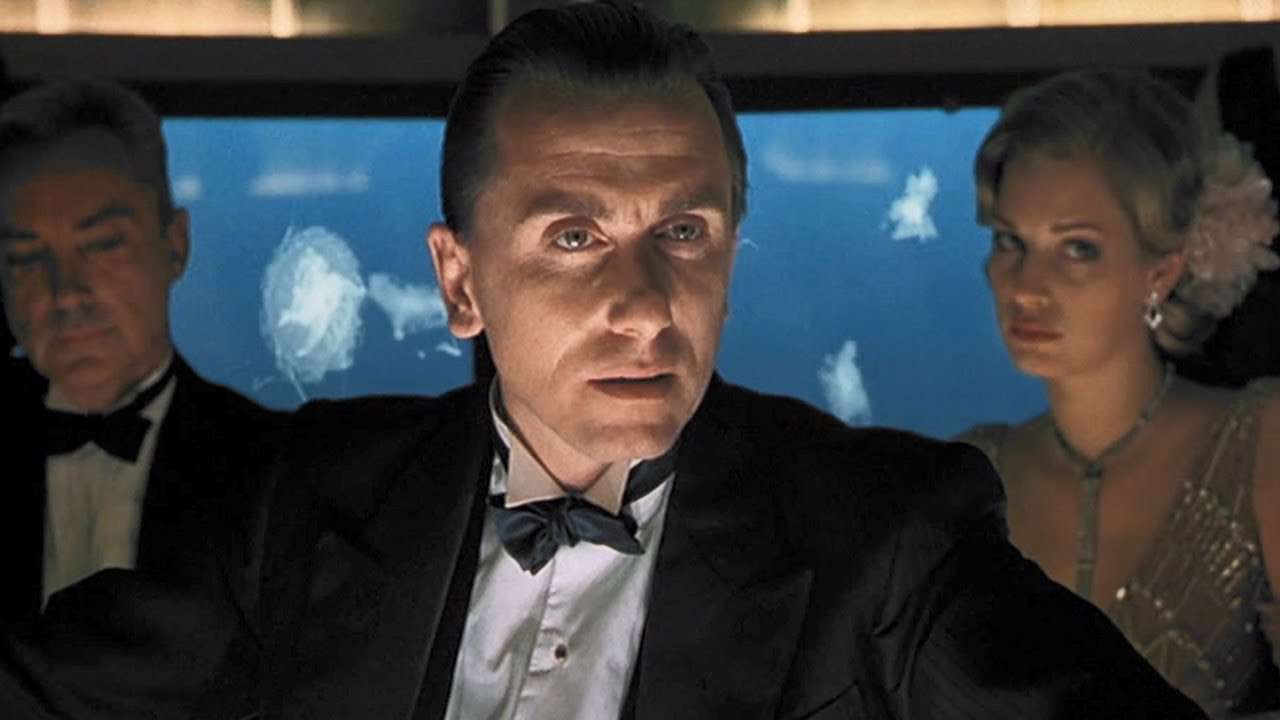
In fiction and documentary filmmaking, Herzog has achieved a truly singular voice that has translated to endless vessels outside his own being. Special mention should be given to documentaries like “Fata Morgana,” “Encounters at the End of the World,” and “Lo and Behold: Reveries of the Connected World,” which tap into the director’s ceaseless interest in an intricate world that dwarfs us all, be it natural or artificial. Similarly, “My Best Fiend” takes a surprisingly tender look at Herzog’s notoriously intense working relationship with Klaus Kinski. At the same time, two of those Kinski collaborations – ”Woyzeck” and “Cobra Verde”—just missed out on the cut. “Invincible,” too, feels very much like a Herzog/Kinski project reawakened for a new, curious millennium, set in the not-too-distant past, yet entirely timeless and uncompromising in its artistic resolve.
10. The Enigma of Kaspar Hauser (1974)
Kaspar Hauser was a foundling in 19th-century Bavaria who spent the first 17 years of his life chained up in a dark room, completely cut off from the outside world. One day, whoever had him locked up for so long let him loose in Nuremberg, leaving everyone in town as puzzled by this new arrival as Hauser himself—completely uninitiated in any form of human contact—was by them. Who did Werner Herzog choose to portray this fascinating figure of youth? Bruno S., a 41-year-old untrained actor and self-taught musician who’d spent the majority of his childhood in and out of mental institutions. Much hubbub was stirred at the time from this puzzling decision, but in “The Enigma of Kaspar Hauser,” Bruno S.’s beguiling presence makes Herzog’s confounding decision feel more than earned.
A purveyor of what he calls “ecstatic truth”—in which the true essence of an idea can exist despite what hard facts might say to the contrary—Herzog’s desire to get to the center of what made Hauser such a compelling individual allows for the strange casting decision to embody a greater sense of emotional realism than could have been achieved with a more standard choice. A man who was just as much a fascination to the people of Nuremberg as he was a nuisance, Hauser is a figure whose off-kilter sense of wisdom—one scene in which he answers a doctor’s brain-teaser with an unexpected (and entirely correct) answer, only to be brushed off, painfully exemplifies this dynamic—makes him the perfect subject for Herzog to dissect with just as much fascination as those villagers, but with far greater empathy as well.
9. Little Dieter Needs to Fly (1997)
Never one to shy away from the exploration of real-life trauma, Herzog’s interest in this realm may only be surpassed by his interest in those traumatized subjects who themselves attempt to confront the hardships and achieve some semblance of closure. “Little Dieter Needs to Fly” is one such documentary about German-American pilot Dieter Dengler, whose downed plane resulted in a years-long capture in Vietnam and a subsequent harrowing escape that nearly cost him his life on several occasions. Most of the film consists of Herzog and Dengler revisiting the scene of the latter’s traumas, with reenactments that risk bordering on traumatic relapse, instead providing a sense of catharsis for Dengler and camaraderie with his companion.
Herzog sees just as much value in Dengler’s door-closing habits on his city porch as he does in his distant treks through the Laotian jungles, which you can tell means more to the subject than words can describe. It should come as no surprise that Herzog and Dengler would hit it off as two individuals utterly enraptured by the lengths to which human beings can go for survival—both of them have varying degrees of experience in this respect. Though a documentary, Herzog considers this his best “fiction feature,” for his love of twisting and reassembling the truth often leaves him with his own definitions of what constitutes fiction and documentary in cinema. In any case, “Little Dieter Needs to Fly” gets to a truth about the endurance of the human spirit that few other films achieve.
8. Bad Lieutenant: Port of Call – New Orleans (2009)
If you know anything about “Bad Lieutenant: Port of Call – New Orleans” (and its hilariously long-winded title), you probably know that it has absolutely nothing to do with Abel Ferrara’s Harvey Keitel vehicle “Bad Lieutenant” from 1992, aside from the vague outline of a corrupt cop. This confusion created a publicized rift between the filmmakers that they eventually patched up amicably. Still, the inherent comparison between both works leads to one common conclusion: Herzog gave Ferrara a run for his money. Taking a black comedy approach where Ferrara’s film was more grizzled and bleak, “Port of Call – New Orleans” proves to be a match made in heaven between the most interesting man alive and the second-most interesting man alive.
In the lead role, the ever-unpredictable Nicolas Cage proves more than adept for Herzog’s unrestrained directing style—in a stunning (and frankly, heartwarming) display of mutual respect, neither actor nor director would officially sign onto the project unless the other’s involvement were confirmed, even though they’d never before met. When asking the director about his character’s motivations—a question he knew Herzog despised—Cage was told to simply embrace the “bliss of evil.” “Bad Lieutenant: Port of Call – New Orleans” perfectly captures this sentiment with a rampant energy that defies all expectations for the normally lyrical works of the filmmaker. And yet, as an artistic statement on the corruptibility and mystery of the human psyche, the film fits into Herzog’s oeuvre like a sweaty, cocaine-powdered glove.
7. Fitzcarraldo (1982)
“Fitzcarraldo” may very well be the film that most succinctly encapsulates what a Werner Herzog project entails: chaos, hubris, interiority, humankind’s endless battle against the natural world, and a hellish production spearheaded by the raving lunacy of Klaus Kinski. A production so famously tumultuous that the documentary chronicling it—Les Blank’s “Burden of Dreams”—is just about as popular as the film itself, “Fitzcarraldo” has become so notable in Herzog’s canon because the madness of its protagonist and the futility of his goals almost seem to run parallel to the director’s own delusions of grandeur in making the film. Of course, as we all know, the film was eventually finished, and the result is nothing short of a testament to Herzog’s resolve just as much as proof of his own certifiable mania.
That the real-life Brian Fitzgerald lugged a 30-ton steamboat across a Peruvian hill was enough motivation for Herzog to tackle the project detailing the man’s life, but as he’s wont to do, sticking to the facts wasn’t enough. Orchestrating the land movement of a 300-ton steamboat (fully assembled rather than broken apart like its historical counterpart), Herzog’s exercise in vanity has been subject to far more rumor and myth than most directors’ entire catalogs are able to drum up. Beyond the madness of its central feat, however, “Fitzcarraldo” remains a startlingly grand and personal expression of every theme Herzog holds dear, presented as only he could understand and embrace them.
6. Land of Silence and Darkness (1971)
For all the stunning grandeur of Herzog’s most celebrated films, some of his most compelling works are those that look at the human spirit on the most granular levels. In comes “Land of Silence and Darkness,” one of the director’s most heartbreaking expressions of human connection through an exploration of the deaf-blind. Though somewhat controversial for some of the scene construction that has populated Herzog’s entire documentary library, the film maintains a sense of truth in the boundless empathy the filmmaker highlights across the film’s runtime. Fini Straubinger, the film’s main subject, would go on to be friends with the filmmaker until her death, and the love with which he examines the hardships of her life never feels wrapped in any sense of ogling spectatorship.
Just the simple act of learning to swim becomes, for the deaf-blind, a nerve-wracking task that exists beyond the realm of description. To that end, such a task remains just as crucial a step towards growth as it would be for anyone else; even if you can’t see the blue waves or hear them rippling, Herzog never forgets that feeling the water on your skin is just about the most crucial element of any aquatic excursion. When losing two of the five senses, how does one manage to truly feel the world around them? “Land of Silence and Darkness” answers this question by first extending a sympathetic hand, which is more than most are willing to provide for these marginalized few.
Read More: 100 Films Recommended By Japanese Master Filmmaker Akira Kurosawa
5. Aguirre, the Wrath of God (1972)
Werner Herzog’s most famous collaboration with Klaus Kinski, “Fitzcarraldo,” may somewhat eclipse their first time working together, but “Aguirre, the Wrath of God” has steadfastly refused to live its entire existence under the thumb of its steamboat-shaped follow-up and for good reason. If their 1982 team-up exposes Herzog’s and Kinski’s virtues and faults as artists in the most bombastic fashion, then their first offering from a decade prior distills this dynamic into its most basic elements. Another story of a madman cruising through the Peruvian jungles in search of glory, “Aguirre” instead opts for more overt coverage of the thirst for conquest and, as a result, becomes even more effective as a character study for both its subject and its filmic architect.
A film in which the horrors of human hysteria lie mainly below the surface, constantly on the verge of eruption, “Aguirre” is a ticking time bomb of colonial destitution that finds its most startlingly effective moments in the casual coldness of its title character’s cruelty. Herzog’s guerilla style of filmmaking comes through in the film’s own guerilla aesthetics, creating a unique sense of texture that firmly places these characters and their futile quest within a space that feels entirely real and yet somewhere outside the bounds of regular human existence. Just as grounded as it is ethereal, “Aguirre, the Wrath of God” remains a critical staple in Herzog’s career, inextricably tied to his legacy as an artist and a surgeon of the human soul.
4. Stroszek (1976)
When asked at a Q&A about his own favorite Herzog film, David Lynch sat unmoving in his chair, raised the microphone to his mouth, and simply proclaimed, “Stroszek!” No further details were provided, and frankly, none were needed. In Herzog’s endless quest to examine the full depths of the human spirit, it only makes sense that such a journey would go incomplete without some examination of the so-called American Dream. “Stroszek” is his stab at the concept, taking a deceptively jovial and subversive look at the hardships one might expect of such a tried-and-true narrative about the immigrant experience. It’s only as the film nears its finale, though, that Herzog makes the true melancholy of Stroszek’s circumstance fully clear.
His second collaboration with Bruno S., Herzog wrote the role for the actor in four days after having initially promised him the lead in “Woyzeck”—a part that would eventually go to Kinski. To make it up to the disheartened Bruno, Herzog crafted him a character that once more plays into the singular figure’s strange mixture of brutish and tender physicality. Stroszek’s inability to fully express his pain and suffering is echoed in the film’s own decisions to downplay that suffering until such a point where ignorance can no longer work as a shield. Eventually, the shield cracks, and “Stroszeck” becomes a wholly uncompromising view of where the American Dream will really take you.
3. Nosferatu, the Vampyre (1979)
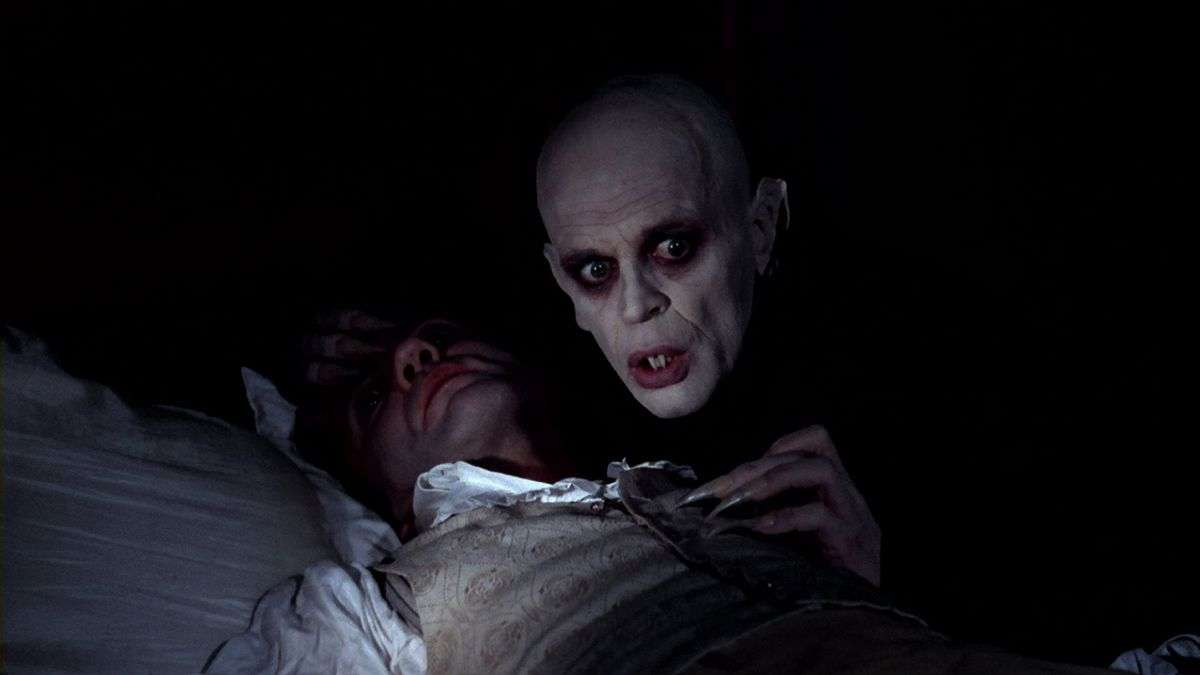
Of all the daredevil antics that have marked Werner Herzog’s career—from expeditions on an abandoned island at risk of volcanic destruction to being buried beneath an avalanche for days on end—some of the most ardent cinephiles may argue that his most dangerous undertaking was in 1979 when he decided to remake F. W. Murnau’s “Nosferatu.” A classic of both horror cinema and German Expressionism, remaking “Nosferatu” seems a thankless task for any filmmaker, let alone someone like Herzog, who already reveres the original as the most significant cinematic contribution his native Germany has ever produced. “Nosferatu, the Vampyre,” however, outdoes Murnau’s efforts through sheer commitment to bone-chilling style and soul-crushing loneliness.
More direct in its imagining of the titular vampire as a sexually inept outcast, “Nosferatu, the Vampyre” makes incredible use of Klaus Kinski’s lanky physique, caking him in meticulous makeup to fully sell a visual manifestation of human decrepitude in its most exaggerated, yet still believable, form. (This shoot, surprisingly, went over without any drama between the actor-director pair.) While Kinski’s performance is perfectly dialed back, the film surrounding him exceeds its predecessor due to how much Herzog exaggerates the expressionistic components to emphasize just how small this monster feels despite the looming danger he heralds. The sets are bigger, the music is louder, and the rats are more numerous, but through it all, Nosferatu’s plague is one that kills with little more than an infected whisper.
2. Rescue Dawn (2006)
Perhaps a surprise for those who expected one of Herzog’s more widely celebrated films to appear this close to the top of the list, “Rescue Dawn” is actually the perfect encapsulation of the director’s varying virtues and styles, fused together into one (relatively populist) feature. Marrying the grit of his documentaries with the scope of his fiction, Herzog’s more conventional revisit of Dieter Dengler’s strife makes for one of the most uncompromising expressions of man vs nature across the entirety of his career. Christian Bale, as expected, is as absolute dynamite as Dengler, bringing genuine pathos and resilience to the war captive’s horrors. At the same time, his energized gaze never once wavers in its primal cry for freedom.
“Rescue Dawn” weaves together hope and hopelessness with such seamless precision that Herzog is able to reach the zenith of what survival entails; it’s terrifying and liberating, blissful and agitated, empowering and humiliating. Some might say that revisiting Dengler’s trauma after already having done so with such fitting disregard for convention—five years after the subject’s passing, no less—might constitute some form of disrespect for the war hero’s legacy, but “Rescue Dawn,” if anything, demonstrates Herzog’s inability to let his friend go, and his subsequent refusal to let such a genuine respect for the man pass without being fully expanded upon to the best of his abilities. Dengler wasn’t around to see “Rescue Dawn” as he was for “Little Dieter Needs to Fly,” but there is little doubt that his appreciation for Herzog’s enduring admiration would have only strengthened after witnessing this.
1. Grizzly Man (2005)
Most documentarians generally aren’t given the benefit of an auteurist read unless they also delve into fiction filmmaking; Werner Herzog is, naturally, one of these individuals, so the fascination he has with his chosen non-fiction subjects has, on many occasions, been placed under a microscope, examined for the specific value they might have in relation to the man himself. “Grizzly Man,” about amateur bear activist Timothy Treadwell—who was killed by a grizzly bear after 13 summers spent living in the Alaskan wilderness—is quite possibly the documentary given the most auteurist examination with relation to its cinematic mastermind, and it’s not hard to see why. The story of a man who thought he could bend nature to his own will, whether well-intentioned or not, Treadwell’s tragedy is one that undoubtedly hit Herzog on a visceral level. That feeling is translated with incredible poignancy onto the audience.
What’s most crucial in Herzog’s dissection of Treadwell as a personality is that he never conflates his fascination with veneration; on more than one occasion, Herzog’s iconic voiceover lets it be known, in no uncertain terms, just how utterly foolish he believes Treadwell to have been for his arrogant proximity with these wild animals.
At the same time, however, Herzog’s directness never veers into dismissal either, acknowledging those moments in which Treadwell’s quest for conservation may have had shreds of dignified humanism beneath all of the activist’s crazed antics. Whether he believes Treadwell to have been aware of these virtues or to have stumbled upon them amid all the theatrics, “Grizzly Man” is proof that it doesn’t really matter. With this film, Herzog crafts one of the most significant examples of what documentary filmmaking can achieve—a rigorously empathetic peek into the most cavernous reaches of the human spirit.

